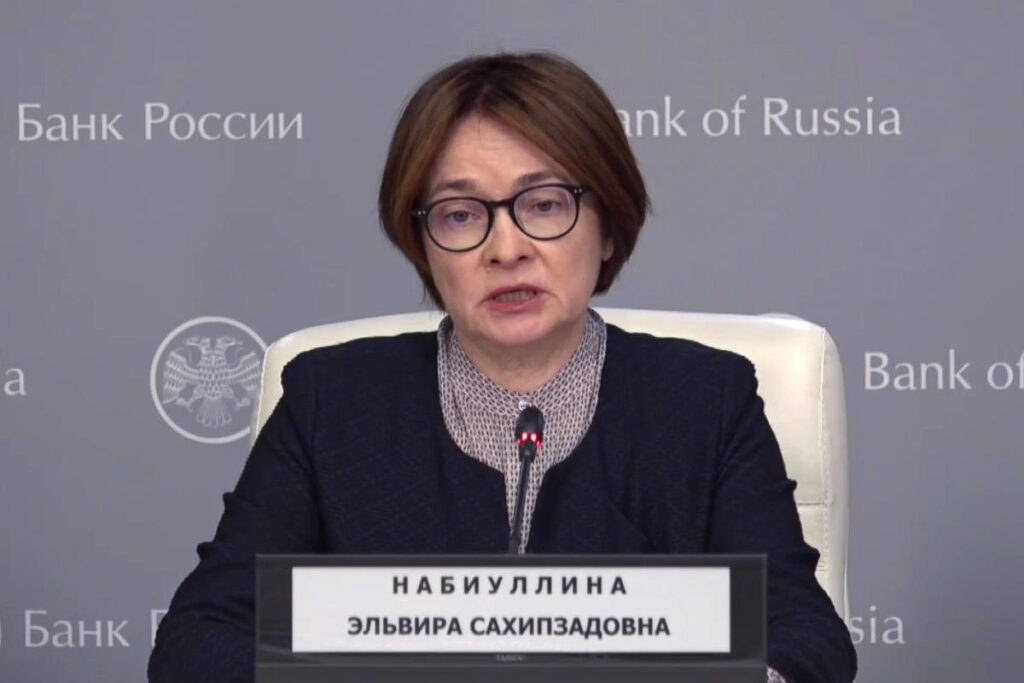On a recent Friday, Russia’s central bank announced a significant increase in its key interest rate, elevating it by two percentage points to an unprecedented 21%. This measure comes as a direct response to rising inflation, which the bank attributes to escalating government military spending that is burdening the economy and outpacing production capabilities. The central bank emphasized in its statement that domestic demand is outstripping the nation’s capacity to supply goods and services, leading to inflation rates exceeding previous forecasts. As inflation expectations continue to rise, the bank hinted at the possibility of additional interest rate hikes in December, signaling its determination to stabilize the economy.
Despite the challenges posed by rising inflation, Russia’s economy continues to show signs of growth, primarily driven by ongoing oil export revenues and substantial government expenditure on military and consumer goods. This dual approach has contributed to the overall economic growth, but it has also led to inflationary pressures that the central bank aims to manage through higher interest rates. By making borrowing more expensive, the central bank hopes to curb consumer spending and, in theory, reduce inflation. The decision to raise interest rates marks a historic high since their introduction in 2013, surpassing the previous record set in February 2022 when rates peaked at 20% amid economic sanctions following Russia’s military actions in Ukraine.
The current economic indicators present a mixed picture for Russia. While inflation remains a pressing issue, the economy recorded a growth rate of 4.4% in the second quarter of 2024, and unemployment is at a low of 2.4%. Manufacturing sectors are operating at full capacity, often focusing on producing military supplies like vehicles and clothing, reflecting the wartime demand for such goods. Additionally, domestic manufacturers are stepping in to replace the gaps left by the cessation of foreign imports, a consequence of ongoing sanctions and corporate withdrawal from the Russian market.
Government financial stability is also bolstered by continued revenues derived from oil and gas exports, which have remained resilient despite the imposition of Western sanctions and a $60 price cap on Russian oil. While the cap is enforced by preventing Western insurers and shipping companies from engaging with over-cap oil sales, Russia has managed to navigate these restrictions by establishing its own fleet of tankers that operate without Western insurance. This strategy has yielded significant revenue, exemplified by the reported $17 billion earned in oil revenues during July alone, proving the country’s capacity to adapt under international pressure.
The combination of increasing interest rates, resilient oil revenues, and the defense sector’s boost to industry illustrates the complex dynamics at play within Russia’s economy. However, the ongoing military expenditures and the focus on domestic production bring forth concerns about the longer-term sustainability of such growth. As inflation continues to challenge economic stability, the central bank’s interventions through interest rates will be critical to mitigate rising prices, yet they may also hamper consumer spending and economic vibrancy in the short term.
Looking ahead, the actions of the central bank will likely remain closely monitored, especially as it prepares for potential further rate hikes in December. The interplay between military spending, inflation pressures, and the overall health of the Russian economy will influence both domestic economic policies and international relations. As the central bank navigates these turbulent waters, its success in maintaining economic stability will depend not only on managing inflation but also on sustaining growth amid ongoing geopolitical tensions and external economic pressures.

